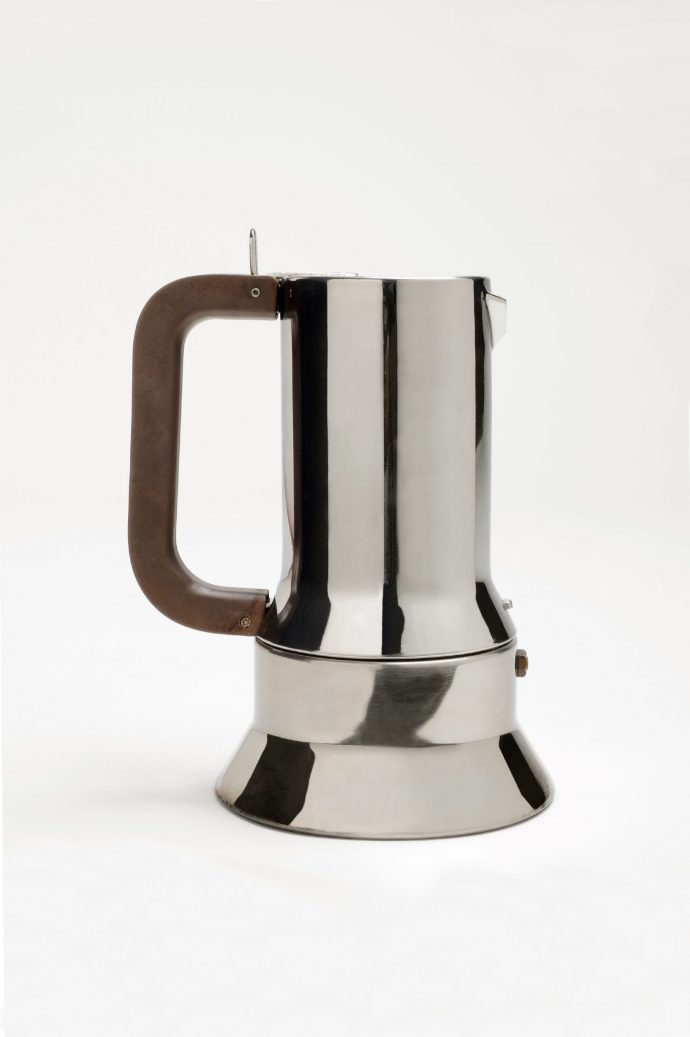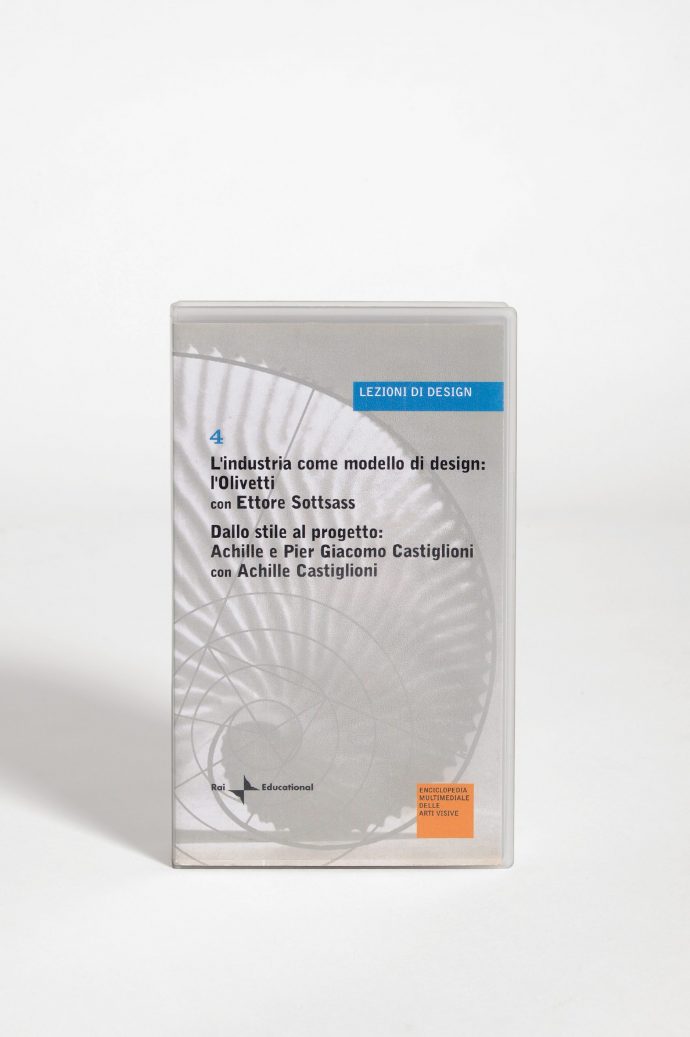Concept
To mark its opening, the ADI Design Museum presents “The spoon and the city”,
an exhibition curated by Beppe Finessi that explores the Compasso d’Oro Award Historic Collection, recognized by the Ministry of Cultural Heritage and Activities as an asset of exceptional artistic and historical interest.
The exhibition design, which provides a narration of every edition of the award from 1954 to today, brings together different yet complementary materials. The presence of tangible objects, in the form of original examples, is both fundamental and essential and perfectly fulfils the ADI Design Museum’s ambition of telling the story of Italian design while at the same time presenting other types of documents in the form of original drawings and studio sketches by the designers used to represent the conception and the first draft of each project, along with executive drawings, carried out within the technical offices, equally essential steps for the success of Italian design.
In order to better understand these inventions, often together with their early models, particular emphasis is given to the world of patents, which have accompanied the many emblematic design projects of Italian creativity. There is no shortage of study models with which to express the various phases of this development, since these are the first moments of “real” verification of the objects’ formal qualities along with the significant ergonomic and functional tests of a large number of iconic products.
“The spoon and the city” has also chosen to underline the fundamental role played by Italian magazines. In the course of almost a century of history, there have been several significant publications which are thus displayed alongside the award-winning objects. Thanks to their timely covers and dedicated articles, a number of these publications have helped to spread awareness of Compasso d’Oro design projects all around the world.
The “written word” not only accompanies the visitor with descriptions of the individual projects, but is also itself part of the “visual” story, through a selection of a number of quotes by designers, entrepreneurs and above all critics: historians, initially from the world of art and architecture, intellectuals who turned their gaze towards design and who were the first to underline the importance of this area of productivity.
One of the essential components of the world of design is communication, and for this reason several of the instruments used in spreading awareness and promotion are on display, such as pages of advertisements and catalogues, naturally designed by leading Italian graphic designers.
Also within the ADI Design Museum there are a number of images taken by some of the greats from the world of photography. These have clearly been considered exceptional and are therefore exhibited not only as “visual documents” but as “works” in their own right.
Finally, in “The spoon and the city”, a series of special in-depth sections have been developed to tell the story of a number of different selected projects, one for each award year. Along with a further critical reflection, this investigation presents 28 Compasso d’Oro Award-winning designs in greater detail, each one having been selected as representative of the different spheres and souls of Italian design, ranging from furnishing objects to games for children, clothing to industrial machines and from various experiments in art and craftsmanship to means of transport. From the spoon to the city.
Beppe Finessi
Un museo è un archivio aperto, un luogo di cultura e di custodia di opere, oggetti e documenti, materiali e immateriali. Un museo del design, essendo il design tutto il processo tra progetto e prodotto, non può essere un luogo dove osservare unicamente il prodotto finito, perché questo è “solo” il risultato e punto di arrivo di un lungo percorso. Per avere coscienza di questo bisogna avere conoscenza di tutti gli attori e tutte le azioni necessarie, indispensabili al suo compimento. Nella storia del Premio, con l’accumularsi di documenti ricevuti per la sua organizzazione, ADI aveva deciso di attivare un Centro di Documentazione per conservare alcuni materiali illustrativi riferiti ai prodotti candidati e le fotografie delle esposizioni e delle cerimonie di premiazione. Nella prospettiva dell’apertura di questo nuovo ADI Design Museum, Fondazione ADI ha voluto iniziare la ricostruzione critica di un archivio storico che potesse raccogliere anche le infinite storie che stanno “dietro” ai prodotti premiati. Se alcuni degli oggetti esposti non è difficile averli già presenti nelle nostre case, i disegni, gli appunti, i prototipi, esistono invece come pezzi unici e il museo è il luogo ideale dove esporli e l’archivio dove custodirli. In questa rinnovata prospettiva, una squadra di ricerca ha lavorato su vari fronti: in contatto con i progettisti nei loro studi e laboratori, con i produttori nei loro uffici e fabbriche, con i più importanti archivi istituzionali che conservano (con ineccepibile senso di responsabilità) i materiali dedicati al progetto, con le fondazioni che tutelano le opere dei grandi maestri, e infine con sorprendenti collezionisti privati. Grazie a tutti questi appassionati interlocutori, oggi, ADI Design Museum accoglie circa 2.500 “opere” esposte su più di 10.000 “documenti” ritrovati in questa prima fase di ricerca: sono schizzi euristici, disegni degli studi di progettazione, disegni esecutivi degli uffici tecnici aziendali, relazioni di brevetto, modelli e prototipi, cataloghi aziendali e libretti di prodotti, materiale comunicativo e pubblicitario, fotografie d’autore, oltre a un ampio apparato bibliografico e pubblicistico che riporta alla nostra attenzione la lettura critica che nel tempo è stata dedicata a questi progetti del design italiano. Sono tantissimi preziosissimi documenti, fino a ieri sparsi e a volte dimenticati, che in questo museo possono finalmente ritrovarsi ordinati dopo anni di separazione, per contribuire a ricostruire un’immagine integrale e organica dello spirito e del lavoro che hanno guidato il processo dal progetto fino al prodotto, prima e dopo il meritato riconoscimento del Premio Compasso d’Oro.
Matteo Pirola
Crediti
curated by
Beppe Finessi
exhibition and graphic design by
Italo Lupi e Migliore + Servetto Architects
Scientific coordination and management of archives,
historical documentary research
Matteo Pirola
with
Marta Elisa Cecchi
Stefania di Maria
Annalisa Ubaldi
Benedetta Zannoni
work supervision by
Matteo Vercelloni
set up
Merlo SpA
technical sponsor
Merlo SpA, Targetti Sankey SpA, SAIB SpA

























